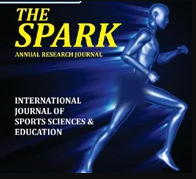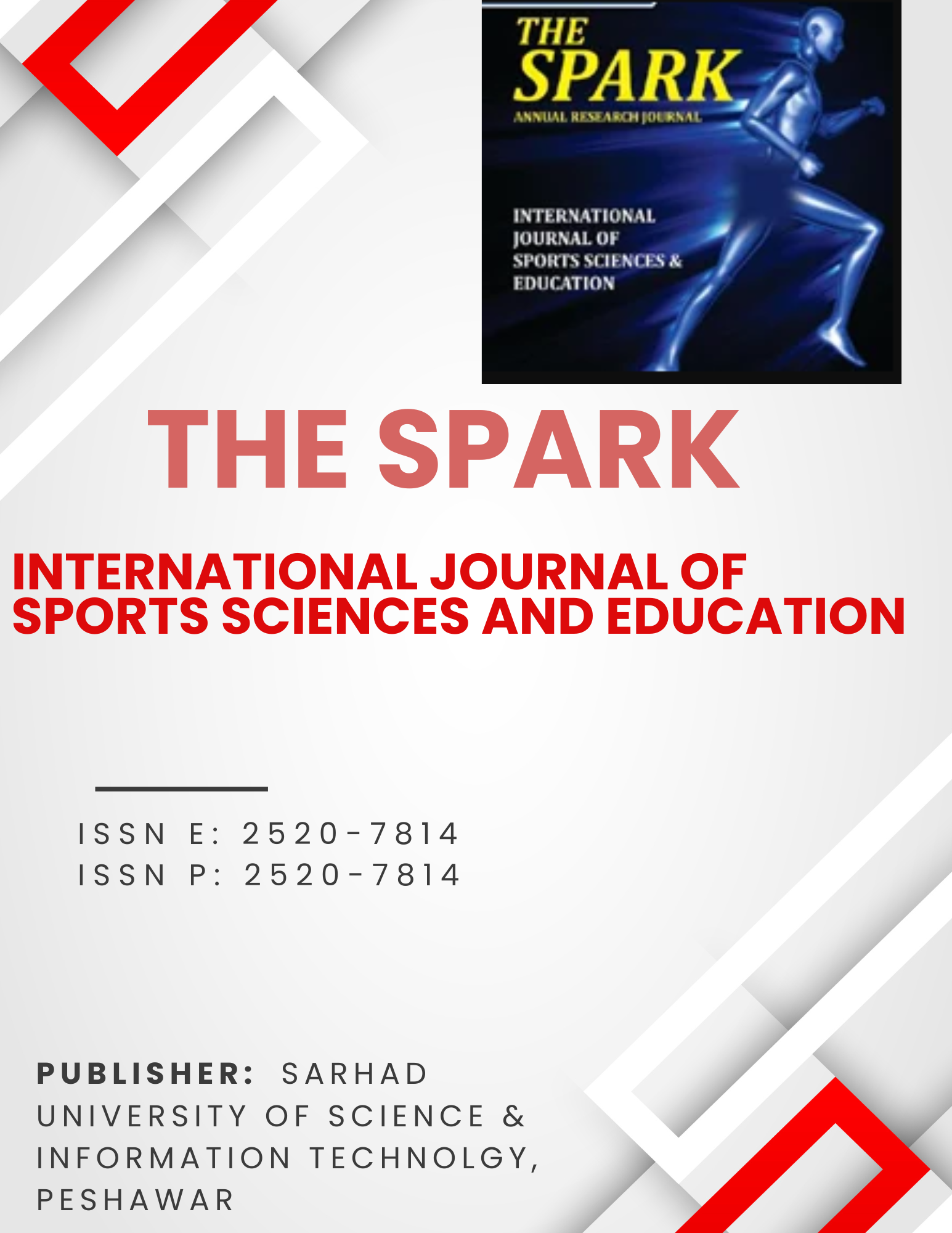HEALTH AND PHYSICAL EDUCATION (HPE) AS AN EDUCATIONAL DISCIPLINE IN PAKISTAN: CONTEMPORARY ISSUES AND PROSPECTS
Keywords:
Curriculum, physical activities, instruction, health and nutrition, carrier opportunities, guidance, teacher trainingAbstract
Purpose of the study: This article reviews the importance of Health and Physical education (HPE) as an educational discipline in Pakistan: contemporary issues and prospects involved in the negligence of this important sphere of education which range from lack of interest of stakeholders in Pakistan. Methodology: Peer-reviewed and scholarly journals were searched for articles related to Health & Physical education program. Keywords included curriculum, physical activities, instruction, health and nutrition, carrier opportunities, guidance, teacher training because the review aimed to highlight the importance of HPE as an educational discipline in Pakistan and to address the prevailing issues and prospective improvement. Findings: The status of Health and Physical education as an academic discipline was discussed in the article. Among the comparison of the program in Pakistan with that of the others countries, a lack of awareness about the benefits and career opportunities for graduates of HPE is there. Applications of this study: Like other programs and projects, the HPE program aimed at the production of skillful youth who have comprehensive knowledge of the subject and also the practice. This study focused on only Health and physical education program but will help to bring positive change in the other discipline too and will facilitate the production of skilled youth in other academic programs. Novelty/Originality of this study: This review highlights the importance of the Health and Physical education program both at inter, BS ( Bachelor of Studies ), MS, & Ph.D. level and practical outcomes in the shape of physically, mentally, and emotionally fit graduates.References
Armour, K. M., & Yelling, M. (2007). Effective professional development for physical education teachers: The role of informal, collaborative learning. Journal of teaching in physical education, 26(2), 177-200.
Bashir, A., Abro, A. A., Anwar, S., & Ali, M. (2017). A State Of Physical Education And Sports In Pakistan: A Critical Analysis On Lack Of Infrastructure And Framework In Pakistani Institutions. The Shield-Research Journal of Physical Education & Sports Science., 11.
Biddle, S.J.H., Gorely, T., &Stensel, D. (2004). Health-enhancing physical activity and sedentary behavior in children and adolescents. Journal of Sports Sciences, 22, 679–701.
Clarke, N. (2008). Information and communications technology in physical education: innovative teaching and learning approach. In Creative Approaches to Physical Education (pp. 108-123). Routledge.
Devecioglu, S., Sahan, H., Tekin, M., &Yildiz, M. (2012). Development of innovative strategies for sports education. Procedia-Social and Behavioral Sciences, 46, 445-449.
Dirajlal-Fargo, S., Webel, A. R., Longenecker, C. T., Kinley, B., Labbato, D., Sattar, A., &McComsey, G. A. (2016). The effect of physical activity on cardiometabolic health and inflammation in treated HIV infection. Antiviral therapy, 21(3), 237.
Dureja, G.&Bal, B. (2012). Hawkeye: logical innovative technology use in sports for effective decision making. Sport Science Review, 21(1-2), 107-119.
Gil, P, "The Importance of Physical Education to Students Health and Academics" (2020). Capstone Projects and Master's Theses. 758.
Goran, M. I., Reynolds, K. D., & Lindquist, C. H. (1999). Role of physical activity in the prevention of obesity in children. International journal of obesity, 23(3), S18-S33.
Haugland, S., Wold, B., &Torsheim, T. (2003). Relieving the pressure? The role of physical activity in the relationship between school-related stress and adolescent health complaints. Research quarterly for exercise and sport, 74(2), 127-135.
Ha, A., Lee, J., Chan, D., & Sum, R. (2004). Teachers' perceptions of in-service teacher training to support curriculum change in physical education: The Hong Kong experience. Sport, Education, and Society, 9(3), 421-438.
Haider, S. Z. (2008). Challenges in higher education: Special reference to Pakistan and South Asian developing countries. Nonpartisan education review, 4(2).
Hardman, K. (2003). School physical education and sport in Europe-rhetoric and reality: current and future perspectives. Kinesiology: International Journal of fundamental and applied kinesiology, 35(1.), 97-107.
Iqbal, Z., & Rashid, A. (2018). ASSESSMENT OF THE PREVAILING BARRIERS IN PROMOTING PHYSICAL ACTIVITIES AMONG THE INTER-LEVEL COLLEGE STUDENTS OF DISTRICT PESHAWAR. THE SPARK A HEC Recognized Journal, 2(1), 82-89.
Kayani, S., Wang, J., Biasutti, M., Zagalaz Sánchez, M. L., Kiyani, T., &Kayani, S. (2020). Mechanism Between Physical Activity and Academic Anxiety: Evidence from Pakistan. Sustainability, 12(9), 3595.
Laar, R. A., Shi, S., & Ashraf, M. A. (2019). Participation of Pakistani Female Students in Physical Activities: Religious, Cultural, and Socioeconomic Factors. Religions, 10(11), 617.
Maugeri, G., Castrogiovanni, P., Battaglia, G., Pippi, R., D'Agata, V., Palma, A., ...&Musumeci, G. (2020). The impact of physical activity on psychological health during the Covid-19 pandemic in Italy. Heliyon, 6(6), e04315.
McNeill, M. C., & Fry, J. M. (2010). Physical education and health in Singapore schools. Asia-Pacific Journal of Health, Sport and Physical Education, 1(1), 13-18.
O’Donovan, G., Hamer, M., Sarmiento, O. L., &Hessel, P. (2020). Education in early life markedly reduces the probability of cognitive impairment in later life in Colombia. Scientific Reports, 10(1), 1-8.
O'Neil, K., & Krause, J. M. (2019). Physical Education Teacher Education Faculty Self-Efficacy toward Educational Technology. Physical Educator, 76(5), 1287-1305.
Papastergiou, M. (2009). Exploring the potential of computer and video games for health and physical education: A literature review. Computers & Education, 53(3), 603-622.
Penney, D., & Chandler, T. (2000). Physical education: what future (s)?. Sport, Education, and Society, 5(1), 71-87.
Rossi, T., Tinning, R., McCuaig, L., Sirna, K., & Hunter, L. (2009). With the best of intentions: A critical discourse analysis of physical education curriculum materials. Journal of teaching in physical education, 28(1), 75-89.
Sarwar, M., Hussain, S., &Mehmood, T. (2010). Physical education at secondary school level in Gujranwala, Pakistan. Asian Social Science, 6(11), 120.
Slemenda, C. W., Miller, J. Z., Hui, S. L., Reister, T. K., & Johnston Jr, C. C. (1991). Role of physical activity in the development of skeletal mass in children. Journal of bone and mineral research, 6(11), 1227-1233.
Tappe, M. K., &Burgeson, C. R. (2004). Physical Education: A Cornerstone for Physically Active Lifestyles. Journal of Teaching in Physical Education, 23(4), 281–299.
Tilga, H., Hein, V., Koka, A., Hamilton, K., &Hagger, M. S. (2019). The role of teachers' controlling behavior in physical education on adolescents' health-related quality of life: Test of a conditional process model. Educational Psychology, 39(7), 862-880.
Downloads
Published
How to Cite
Issue
Section
License
Submission of an original manuscript to the Journal will be taken to mean that it represents original work not previously published, that it is not being considered elsewhere for publication. And if accepted for publication, it will be published in print and online and it will not be published elsewhere.
The journal main policy reflects in its stance that the publication of scholarly research is exclusively meant to disseminate knowledge and not-for-purposes.








 Name of Journal:
Name of Journal: 